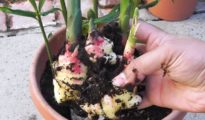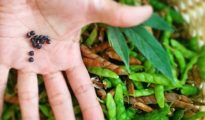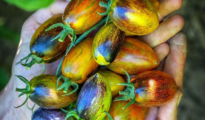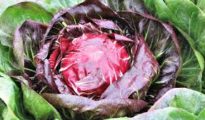Leeks are the onion's elegant, more subtle cousin and when prepared correctly, can be absolutely delicious! Because they have a subtler flavor than onions, leeks are a great accompaniment to any dish and will please everyone! They don't require much room in the garden, and they also prefer a cooler climate. Today we'll show you how to grow leeks in your garden with our step-by-step gardening guide so you can enjoy leeks all season long!
Leeks are a versatile and delicious vegetable that has been cultivated and enjoyed for thousands of years. These Allium family members are related to onions, garlic, and shallots, but have their own unique flavor and characteristics. In this comprehensive guide, we'll explore the history of leeks, how to grow them, pests and diseases that can affect them, and how to harvest and cook with leeks. So, whether you're a novice gardener or an experienced grower looking to try something new, you'll find all the information you need to successfully cultivate and enjoy this flavorful and nutritious vegetable.
How to Grow Leeks in the Garden

The History of Leeks
Leeks have a long and storied history, dating back to ancient times. They are believed to have originated in the eastern Mediterranean and the Middle East, and were cultivated by ancient civilizations such as the Egyptians, Greeks, and Romans. In fact, the Roman Emperor Nero was known to consume leeks regularly, as he believed they had beneficial effects on his voice.
Throughout history, leeks have been associated with various myths and legends. In Welsh folklore, leeks are a symbol of St. David, the patron saint of Wales, and are worn on St. David's Day to commemorate a famous battle in which Welsh soldiers wore leeks to distinguish themselves from their enemies. Today, leeks continue to be a popular vegetable throughout Europe and are gaining popularity in other parts of the world as well.
What are Leeks?
Leeks (Allium ampeloprasum var. porrum) are a biennial plant in the Allium family, which includes other well-known vegetables such as onions, garlic, and shallots. They are characterized by their long, thick, white stalks, and flat, dark green leaves that grow in a fan-like arrangement.
Leeks have a mild, sweet, and slightly earthy flavor, making them a versatile ingredient in a wide range of dishes. They are particularly popular in European cuisine and are often used in soups, stews, and gratins. In addition to their culinary uses, leeks are also a good source of vitamins A, C, and K, as well as minerals such as iron, manganese, and folate.
How to Grow Leeks
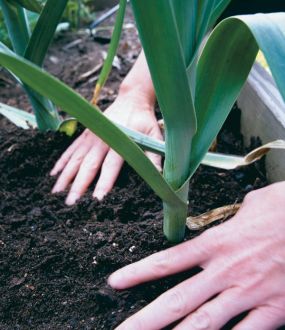
Growing leeks is not particularly difficult, but it does require some patience, as they have a relatively long growing season. With proper care, however, you can expect a bountiful harvest of delicious, homegrown leeks.
Soil Preparation
Leeks thrive in well-draining, fertile soil with a pH between 6.0 and 7.0. To prepare your soil for planting, work in plenty of organic matter, such as compost or well-rotted manure, to improve soil structure and fertility. Additionally, you may want to consider adding a balanced, slow-release fertilizer to provide the necessary nutrients for healthy growth.
Planting Leeks
Leeks can be started from seeds or transplants. To start leeks from seeds, begin by sowing seeds indoors about 8-10 weeks before the last expected frost in your area. Plant seeds about 1/4-inch deep in seed trays or pots filled with a quality seed-starting mix. Keep the soil moist and maintain a consistent temperature of around 60-70°F (15-21°C). Seedlings should emerge within 10-14 days.
Once your seedlings have developed at least two sets of true leaves and are about 6 inches tall, you can begin to harden them off by gradually exposing them to outdoor conditions for a week or two. This process helps the plants acclimate to their new environment and reduces the risk of transplant shock.
When transplanting leeks, space them about 6 inches apart in rows that are 12-18 inches apart. To encourage the development of long, white stalks, you can use a dibber or your finger to create a hole about 6 inches deep for each plant. Place the seedling in the hole and gently fill it with water, allowing the soil to settle around the roots. As the leek grows, the hole will fill in, creating a natural blanching effect.
If you prefer to start with transplants, you can purchase them from a local nursery or garden center. Follow the same planting process as described above, ensuring that the transplants are healthy and free from any signs of pests or diseases.
Caring for Leeks
Leeks require consistent moisture throughout their growing season, so be sure to water regularly, especially during dry spells. A layer of mulch can help retain moisture and suppress weeds. As your leeks grow, you can further blanch the stalks by mounding soil around the base of the plants. This process, known as “hilling,” encourages the development of longer, tender white stalks.
Leeks are heavy feeders, so it's a good idea to apply a balanced, slow-release fertilizer or side-dress with compost or well-rotted manure during the growing season to ensure they have access to the nutrients they need.
Pests and Diseases that Affect Leeks
Common Leek Pests
- Leek Moth: This pest's larvae feed on the leaves and stems of leeks, causing significant damage. To prevent infestations, use floating row covers or pheromone traps.
- Onion Thrips: These tiny insects can cause damage by feeding on the leaves, leading to silvery-white streaks. Control measures include insecticidal soap or neem oil.
Common Leek Diseases
- Rust: This fungal disease causes orange pustules on the leaves. To prevent rust, provide good air circulation and avoid overhead watering. Remove and destroy infected plants.
- White Rot: This soil-borne fungus can cause wilting and yellowing leaves, as well as white, cottony growth at the base of the plants. Rotate crops and avoid planting Allium family members in the same area for at least four years.
Prevention and Treatment
To prevent pests and diseases, practice good garden hygiene by clearing away plant debris, rotating crops, and providing adequate spacing for air circulation. Monitor your plants regularly and address any issues promptly to minimize damage.
How to Harvest Leeks
Leeks can be harvested once the stalks reach about 1 inch in diameter, usually around 120-150 days after planting. To harvest, carefully loosen the soil around the base of the plant with a garden fork and gently lift the leek out of the ground.
How to Cook with Leeks
Cleaning and Preparing Leeks
Before cooking with leeks, it's important to clean them thoroughly, as dirt and grit can
accumulate between the layers. To clean leeks, follow these steps:
- Trim off the root end and the dark green tops, leaving only the white and light green portion of the stalk.
- Cut the leek in half lengthwise.
- Rinse the layers under cold running water, gently fanning them out to remove any dirt or debris.
Once your leeks are clean, they can be chopped, sliced, or used whole in a variety of dishes.
Popular Leek Recipes
- Potato and Leek Soup: This classic combination creates a hearty, comforting soup that's perfect for cold weather. Sauté leeks in butter until tender, then add diced potatoes, vegetable or chicken broth, and seasonings. Simmer until the potatoes are cooked through, then blend until smooth and creamy.
- Leek and Mushroom Quiche: A savory quiche filled with sautéed leeks, mushrooms, and cheese makes an excellent breakfast, brunch, or light dinner option. Prepare a pie crust, then layer the cooked leeks, mushrooms, and cheese into the crust. Pour a mixture of eggs, cream, and seasonings over the top and bake until set.
- Braised Leeks: For a simple, elegant side dish, braise leeks in a mixture of butter, white wine, and vegetable broth until tender. Top with fresh herbs and a sprinkle of Parmesan cheese for added flavor.
- Leek and Goat Cheese Tart: A flavorful tart featuring caramelized leeks and tangy goat cheese is perfect for a light lunch or appetizer. Spread a layer of caramelized leeks onto a pre-baked tart crust, then dollop goat cheese on top. Bake until the cheese is slightly melted and the flavors meld together.
Leeks are a versatile, delicious, and nutritious vegetable that can be a wonderful addition to your garden and your kitchen. By understanding how to grow leeks, their history, and potential pests and diseases, you can successfully cultivate a bountiful harvest of leeks. With a variety of ways to prepare and enjoy leeks, you'll never run out of delicious recipes to showcase this underappreciated vegetable. Happy gardening and bon appétit!


